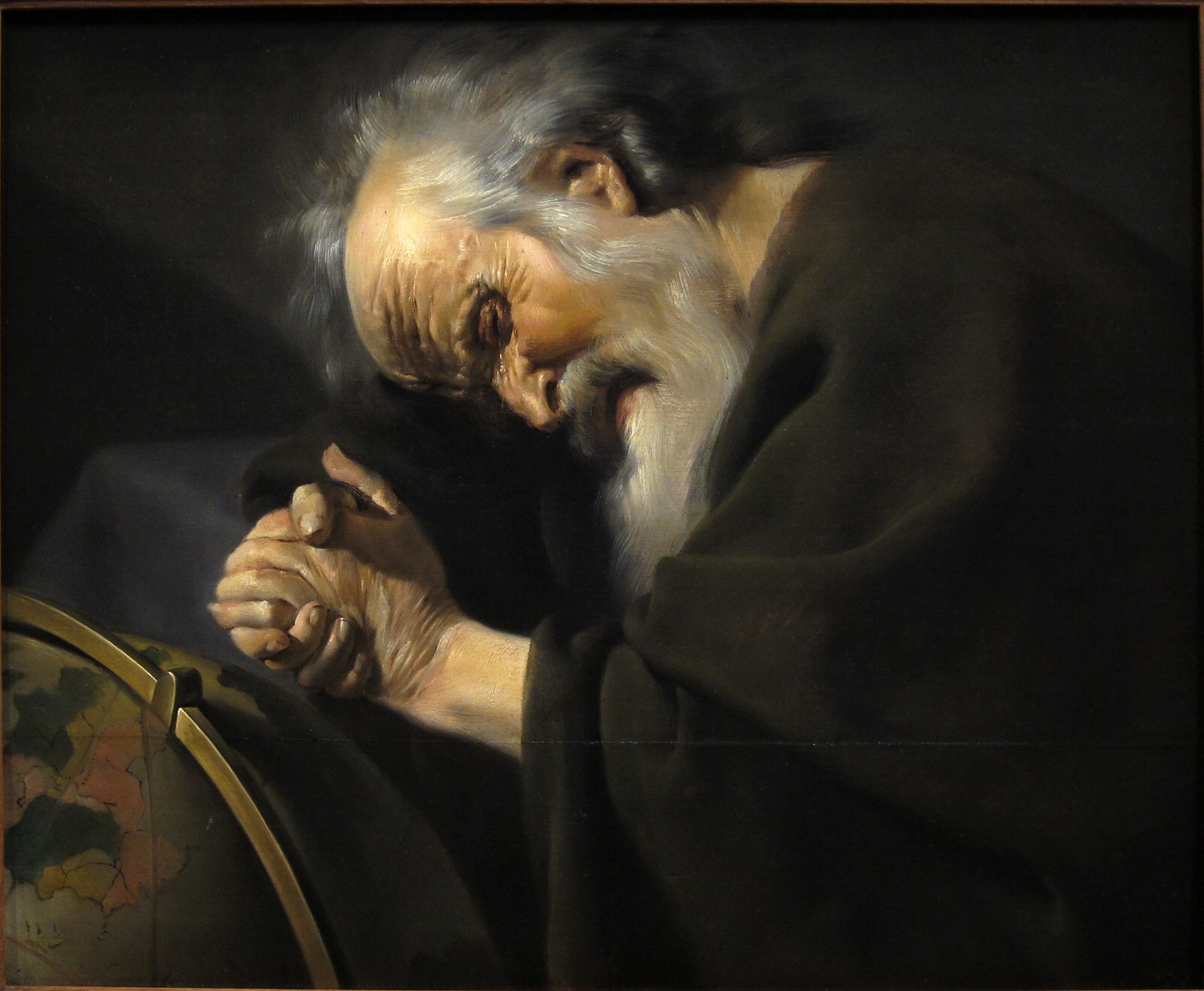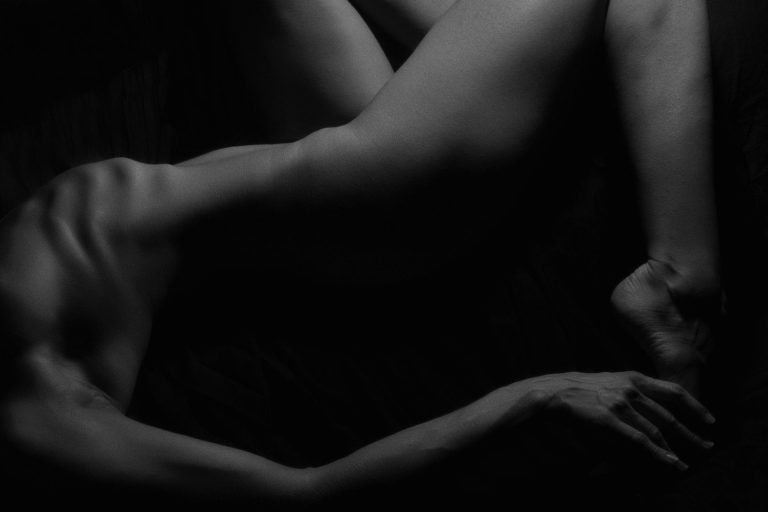B48: the bow’s name: life; its work, death
B80: One must know that war is universal, justice strife, and everything happens by Strife and necessity.
Heraclitus, famously called the ‘riddler’ and ‘the obscure’ lived in 500 BC. His surviving fragments prove to be difficult to understand because, as his nickname suggests, they are highly obscure and puzzling. They’ve been described more as poetic utterances rather than pronouncements that can be analysed into arguments. His fragments are known to be paradoxical and open to interpretation which is undoubtedly his personal style of writing. Here, his writing style is appropriate since the content itself is abstract. Thus, as mentioned in Ancient Greek Philosophy by Vijay Tankha, one can draw a parallel between his paradoxical language and a paradoxical world.
His fragments use metaphors to point to a variety of topics that can be loosely tied together to explain the worldly processes. He developed sets of opposites and the idea that things are in a state of flux.
Theory of Opposites
According to Aristotle, “all things that come into existence in the course of nature are either opposites themselves or compounded of opposites.” Heraclitus deals with the tension of opposites and gives instances of opposition. He generalises the nature of opposition and includes elements with correlated powers, natural processes and abstract terms like justice. As stated in Ancient Greek Philosophy, the fact of opposition is generalised by him into a principle but he doesn’t articulate this principle himself.
To further his Doctrine of Opposites, we will take into account other prominent philosophers’ take on the same and note the disparities between their ideas. For instance, Aristotle understood pairs of opposites like waking/sleeping, birth/death and good/bad, most opposed within the same genus, one of which lacks the other positive term. Milesians on the other hand focused on elements which seem to be naturally opposed, as explained through the above mentioned examples.
Plato too believed that opposites exclude each other, which means if one is present the other must necessarily be absent. However, an important point here is that opposed predicates can characterise the same subject successively if not simultaneously. This can be explained with the help of fragment B67 that states, “God: day night winter summer war peace satiety hunger. It is altered, just as when (fire?) mixed with incense is named according to the flavour of each.”
This just points to the fact that opposites aren’t always opposed to each other in the sense that they are mutually exclusive. Sometime ‘opposites’ prove to be part of the same process and become contraries by way of occurring at different points of time. So from B67 we can conclude that incense differs from fire in terms of its smell and smoke giving quality, but is part of the same genus. This similarity of opposites of the same subject constitutes the paradoxical part of Heraclitus’ philosophy.
Further, there is a claim that opposites are identical. This can be explained using B60, “road above and below one and same”. Here, Heraclitus suggests that the road up and down is the same but is described differently depending on the perspective of the observer. The opposites become identical in the sense that they’re different aspects of the same thing. Up and down are opposite but not entirely because it is the same road one is travelling.
Significance of Harmony
Now as mentioned before, Aristotle gives a systematic analysis of the concept of opposition, which eventually led him to believe that Heraclitus violated the principle of non-contradiction. Plato uses Harmony and quotes B51 that states “they do not apprehend how being at variance it agrees with itself: a reversed harmony as of bow and lyre”, and takes sides with Heraclitus. He defines harmony as consonance, agreement and rhythm produced by fast and slow which was at variance initially but later came to agree. W. K. C. Guthrie in his book A History of Greek Philosophy talks about how Heraclitus makes use of Harmony in music to speak of a concord being in discord, factors which are in discord when they are composed but subsequently in concord. If we look at the example of the bow and lyre, the bow appears to be a static object but in actuality there is a continuous effort being put which will become evident if the string is not strong enough or is allowed to perish. A similar state operates in a tuned lyre. A smooth functioning of both the instruments is therefore dependent on this balance of forces which is therefore ‘good’. This bow and lyre symbolise the whole cosmos which without this struggle would disintegrate (B48- the bow’s name: life; its work, death). We will return to this point.
Despite several arguments, Aristotle sticks to his ideology and asserts that contraries cannot belong to the same thing at the same time and continues to accuse Heraclitus for violating the law of non-contradiction. Heraclitus rebuts this by putting forth the same theory of opposites even as contradictories, may transform from one to another or replace each other. In fragment of B49a “into the same rivers we step and do not step; we are and we are not.” Here, re-reading would take away the claim of violation of this principle. Aristotle’s further analyses of the same states that if the opposites of the same subject exist in same respect then it defeats the purpose of questioning and renders all statements true.
We can summarise the above arguments using B88 that says, “the same in (us) living and dead and/ both the waking and the sleeping and young and old, for these turning around are those, and those again turning around these”, Vijay Tankha, in his book goes on to explain that static and stable condition “conceals a dynamic condition and what is changing reveals order and harmony, where one condition passes into its opposite and then perhaps back again.”
Coming back to war serving as a metaphor for the opposition inherent in things, war is the universal creative and ruling force. The significance of this term can be explained by using bow and lyre again. It goes beyond the understanding that tension between different parts contributes to the functioning of the whole to include, that their functions are also opposed. Bow stands for war while lyre stands for peace. In addition to this, opposites come together at the level of phenomena and are held together by harmony that is hidden to the ordinary observer. Here we may use the fragment B80 that states “one must know that war is universal, justice strife, and everything happens by Strife and necessity”, because opposition is perpetuated to natural processes along with manufactured objects. Such opposition is mandatory for the proper functioning of both animate and inanimate objects on one hand, and whole that is constituted of them on the other. The “war and Strife” of the fragment provide the metaphor that captures this dynamic opposition.
To conclude the above stated ideas, we link them to the cosmos in which there is high need for things to be in opposition for only when the warring sides reach a state of continual tension do we find harmony.
Doctrine of Flux
Closely related to the identity of opposites, specifically from B88, is the doctrine of continuous change or the doctrine of Flux. One of his most famous sayings is “you cannot step into the same river twice”, which is easy enough to gather since water isn’t constant. Another fragment B12 states, “everything is moving like a river, nothing stays still”, and other fragments B91 and B49a (above) connect rivers with change. With the help of these fragments we arrive at the statement “all things are always changing”. Further translated as “on those who step into the same rivers, different and then different waters flow”. If we were to instead put emphasis on the human element, it would translate as “on those same persons who step…”. Following this we can claim that both rivers and persons are subject to the same process, continuous change.
B12 is a statement of coincidence of opposites but also specifies rivers as same. Though the statement is paradoxical, it isn’t necessarily false. A body of water (river) consists of changing waters and if it ceases to flow, it would just be a dry streambed. Thus, river becomes a constant existence that changes what it contains. Coming back to “all things are always changing”, we can positively conclude that some things stay the same by changing. Persons too then, can be understood in the same way, as living and continuing by virtue of constant metabolism, according to Aristotle. Based on this Heraclitus believes in flux, paradoxically a necessary condition of constancy, similar to the tension operating behind the bow and lyre.

